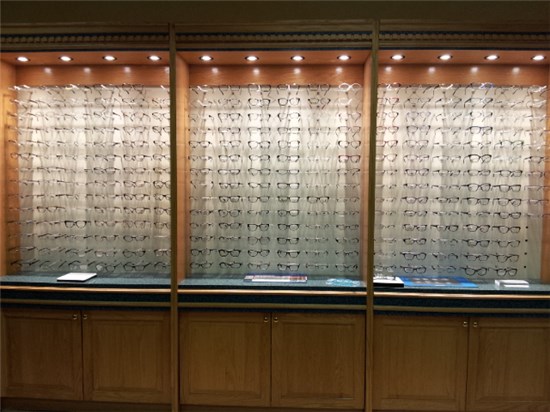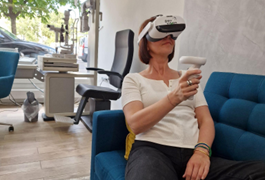By Lisa Shin, OD

April 20, 2016
There are numerous challenges facing independent optometry. Even so, private practice offers many rewards, both personal and financial, for the risk-taking entrepreneur. While many will purchase, or buy into, a practice, starting a practice “cold” is a growing trend and an exciting opportunity for those willing to wear many hats.
I purchased an existing practice right out of school, so I had the advantage of an established patient base. However, it was a part-time satellite office, so I had to build up to a full-time schedule. I also had to hire new staff and purchase ophthalmic equipment, as well as the practice’s first computer. In some ways, it was like opening a practice cold!
What would be your advice for an OD who wanted to open cold? This question was posted on ODWire.org. An OD was ready to start cold, on a $200,000 loan, and needed help with optical and human resources. ODWire.org is an online optometric community that offers great advice and pertinent information from those working in the trenches. “Plans fail for lack of counsel, but with many advisers they succeed” is a proverb that comes to mind. Here’s what they had to say, as well a few of my own thoughts.
Location, location, location. You must find a location with fewer competitors and specialize in an under-served population. You could offer vision therapy in a large school district, ocular disease management in a retirement community or primary care in a college town. Is the market saturated, or is there potential for growth?
EHR is absolutely essential. This was the advice of many ODs, and I wholeheartedly agree! Paper is expensive and storage becomes an issue with limited space. Missing patient files has caused many a headache, and there’s nothing worse than an illegible, poorly documented exam form. Don’t forget that your records will become one of your most valuable assets. Besides, it’s the year 2016, and the federal government’s Centers for Medicaid and Medicare Services’ EHR incentive program has made the transition to electronic health records all but mandatory.
Join a buying group or OD alliance. Maximum buying power is necessary to keep the cost of goods in check. You will also get the practice management support necessary to succeed.
Be smart about frame selection. Stephen Hlis, OD, urged, “ I would be very selective in purchasing designer frames. Limit the number of visits from frame representatives. Everyone under the sun will be trying to get their hands in your pockets. Take bids from ophthalmic laboratories.” I would add: Know your market: Will you be serving an older population or more families with kids? Will there be a demand for the latest in style and fashion? Or will there be a high concentration of the working class, looking for safety and occupational eyeglasses?
Select vision and medical plans carefully. Resist the urge to get onto every panel possible. Sometimes too many insurers can have a negative impact on your practice. It’s much easier to reject plans from the start, then drop them later.
Aggressive marketing in the local area is a must. You should shop local and take your business cards wherever you go. That means church, YMCA, school, grocery store, restaurants and the medical community. Recently, I distributed an article explaining “pinkeye” to the pediatricians and school nurses in my town, which has generated referrals for many new patients.
Focus on contact lenses. Differentiate yourself by becoming the contact lens “expert.” It is one of the best ways to grow your practice.
Build the medical model. There are many resources for the billing, coding and clinical knowledge necessary for the medically oriented practice. Again, it’s much easier to start strong with this emphasis, rather than change entrenched patterns. Understand that routine care and refractions will always be an important part of what we do.

Purchase used equipment and furniture. A retinal camera is a must-have. An anterior segment camera was one of my first upgrades. These are important for documentation, consultation and patient education, not to mention the “wow” factor. Always use a reputable company. eBay is always a risk. Look at warranties and pay extra for shipping and handling. Two years ago, I purchased frame display boards from an ophthalmologist who was closing a satellite office. Even with the costs of shipping and hiring a carpenter for minor repairs, I paid a small fraction of what new furniture would have cost!
Establish smart employee policies. Managing staff can be one of the most stressful difficulties to owning a practice. Craig Steinberg, OD, JD, strongly recommends written contracts with all employees that include class action waivers, arbitration clauses, confidentiality, ownership of records and provisions. Be sure to have an employee handbook that establishes office policies and rules for vacations, office hours, payroll schedule and overtime. This needs to be compliant with your state’s labor laws. Also, your office should have a written policy on sexual harassment, which is required by a Supreme Court decision. You should address problems right away. Document every counseling session, with specific consequences if misconduct continues.
Over the years, I have found that positive reinforcement and encouragement work much better than warnings and threats. It’s important to choose staff wisely and firmly establish policies, from the start. What can I do today to inspire my staff? That is the question.
Are you considering opening a practice cold, or have you done so already? How would you advise an OD wanting to open cold? If you are an established OD, what is your plan to grow your practice and inspire your staff?
Lisa Shin, OD, is the owner of Los Alamos Family Eyecare, P.C. in Los Alamos, N.M. To contact: lshin87@gmail.com





















